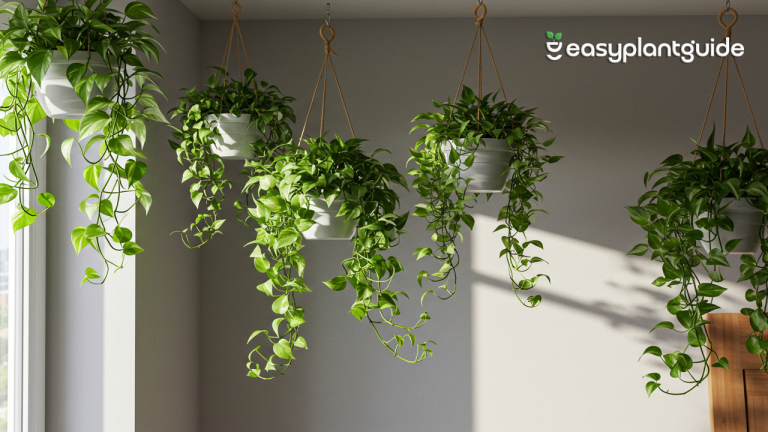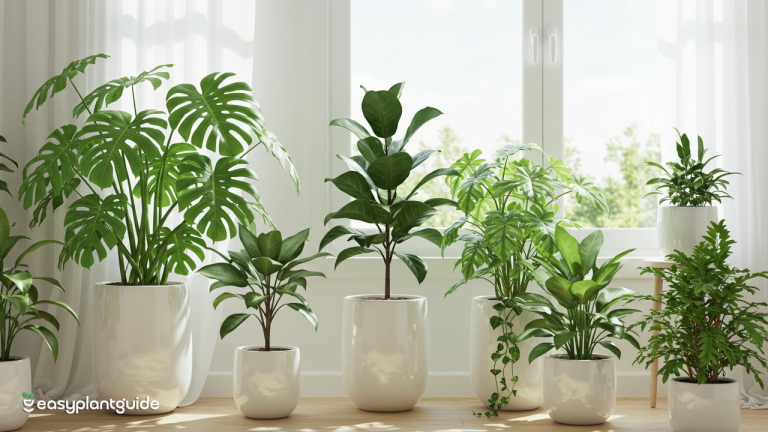7 Amazing Facts About Drago Canario and Its Positive Impact
The Drago Canario, also known as the Canary Islands Dragon Tree (Dracaena draco), is not your ordinary plant. This legendary tree is steeped in history, mystery, and natural beauty. From its umbrella-like crown to the mystical red resin it produces, this tree has captured hearts for centuries. Let’s explore why it’s so fascinating.

What Is the Drago Canario?
The Drago Canario (Dracaena draco), or Canary Islands Dragon Tree, is a fascinating evergreen known for its unusual form and striking beauty. This slow-growing tree develops a thick, sturdy trunk and a wide, umbrella-like crown that makes it stand out in any landscape. Because it grows so gradually, each stage of its life feels like watching nature sculpt a masterpiece over time.
Equally impressive is its longevity—some specimens are believed to live for several centuries, with legends claiming lifespans of more than 600 years. Native to the Canary Islands, the Drago Canario thrives in dry, volcanic soil where other trees might struggle. To locals, it is not just a plant but a powerful cultural symbol representing strength, endurance, and timeless resilience.
7 Facts About Drago Canario
1. Appearance and Growth Habit
The Drago Canario is instantly recognizable with its thick, stout trunk that gradually branches into a wide, umbrella-shaped crown. Its long, sword-like leaves grow in dense rosettes, creating a spiky yet elegant silhouette. As the tree matures, it develops a sculptural, almost architectural form that looks as if it belongs to prehistoric times. This dramatic presence makes it not only a natural wonder but also a striking ornamental feature in gardens and landscapes.
2. Size and Growth Chart
| Feature | Details |
|---|---|
| Height | Up to 12–20 m (40–65 ft) |
| Trunk Width | Can exceed 4 m (13 ft) |
| Growth Rate | Very slow (10–15 years to flower) |
| Crown Shape | Umbrella-like, spreading |
| Lifespan | Several hundred years (600+ rare) |
3. Unique Red Resin: Dragon’s Blood
One of the most fascinating traits of the Drago Canario is its production of a deep red resin, known as “Dragon’s Blood.” This striking sap seeps out when the trunk or branches are cut, giving the tree a mystical quality. Ancient civilizations considered the resin valuable for medicine, dyes, and varnishes. In medieval times, it was even believed to hold magical properties and was used in rituals. Today, “Dragon’s Blood” remains a symbol of the tree’s mystery and rarity.
4. Historical Significance
The Drago Canario holds an important place in history and mythology. In the Canary Islands, it was regarded as a sacred tree, often linked to healing rituals and spiritual practices. Its resin was treasured in Europe for medicinal remedies and protective charms. Many cultures saw it as a symbol of immortality and power due to its longevity. Legends and folklore across the world continue to celebrate the dragon tree as more than just a plant.
5. Habitat and Origin
The Drago Canario is native to the Canary Islands but can also be found in Madeira, Cape Verde, and parts of western Morocco. It thrives in subtropical climates where heat and dryness dominate. Volcanic landscapes, rocky slopes, and coastal regions are its natural home. The tree’s resilience allows it to survive where few other large plants can. This ability makes the Drago Canario a true symbol of adaptation and endurance.
6. Cultural Importance
For the people of Tenerife and beyond, the Drago Canario is more than a tree—it’s part of their cultural identity. It symbolizes strength, patience, and the passage of time across generations. The most famous specimen, El Drago Milenario, is said to be over 800 years old, making it a living monument. Local traditions often reference the tree in folklore and legends. Its image has even been used as a symbol of the Canary Islands themselves.
7. Famous Specimens
Several remarkable specimens of the Drago Canario are celebrated worldwide. The most iconic is El Drago Milenario in Icod de los Vinos, Tenerife, estimated to be 800–1,000 years old. Other ancient dragon trees grow in Madeira and Cape Verde, standing as natural landmarks. Botanical gardens across Europe and beyond showcase cultivated specimens for education and conservation. Each of these trees reflects the majesty and heritage of the Drago Canario.
Growing Drago Canario at Home

Yes, you can grow one! Though the Drago Canario is a slow grower, it adapts well to large pots or spacious gardens if you provide the right conditions. With patience and proper care, it can thrive even outside its native habitat.
- Well-Drained Soil: The Drago Canario needs soil that drains well to avoid waterlogging and root rot. A mix of sandy and loamy soil works best for healthy growth. Good drainage helps the tree stay strong for decades.
- Full to Partial Sunlight: Place the Drago Canario where it gets full to partial sunlight throughout the day. Adequate light keeps its leaves vibrant and supports its slow, steady growth. Without enough sun, it may struggle to develop properly.
- Protection from Frost: The Drago Canario is not frost-tolerant and can be badly damaged by freezing temperatures. If you live in a colder climate, grow it in a container that can be moved indoors. Protecting it from harsh winters is essential for survival.
- Occasional Deep Watering: Instead of frequent shallow watering, the Drago Canario prefers occasional deep watering. This encourages the roots to grow strong and anchor the tree well. Overwatering should always be avoided.
- Patience—Lots of It!: Growing a Drago Canario requires patience, as it may take years before it shows significant height. However, the reward is a striking, long-lived tree that becomes more impressive with age. Its beauty makes the wait worthwhile.
Benefits of the Drago Canario
1. Ornamental Beauty
The Drago Canario is often planted as an ornamental tree because of its unusual and striking form. Its thick trunk, sword-like leaves, and umbrella-shaped crown make it look almost sculptural, giving gardens and landscapes a dramatic, prehistoric vibe. Whether in private yards or public spaces, the Drago Canario stands out as a centerpiece. It is especially valued in subtropical and Mediterranean-style gardens where exotic plants thrive.
2. Natural Shade Provider
Thanks to its wide and spreading crown, the Drago Canario provides excellent shade in hot and dry climates. Its dense rosettes of leaves block sunlight, creating cooler areas beneath the tree. This makes it perfect for use in plazas, parks, and larger gardens where people and animals can rest under its shelter. As it matures, the Drago Canario becomes both a functional and decorative shade tree.
3. Support for Biodiversity
Beyond its beauty, the Drago Canario plays an ecological role by offering shelter for birds, insects, and small wildlife. Its canopy serves as a safe space for nesting, while its trunk and branches provide hiding spots. In this way, the Drago Canario contributes to maintaining local biodiversity. By planting these trees, communities not only preserve culture but also help sustain ecosystems.
4. Source of Dragon’s Blood Resin
One of the most unique features of the Drago Canario is its production of red resin, famously called Dragon’s Blood. This resin has been used throughout history in medicine, cosmetics, and traditional rituals. Ancient civilizations believed it had healing powers and even magical properties. Today, the Drago Canario continues to fascinate researchers and enthusiasts alike for this rare and valuable natural product.
5. Cultural and Symbolic Landmark
The Drago Canario is deeply woven into the cultural identity of the Canary Islands. Locals regard it as a symbol of endurance, strength, and timeless beauty. The legendary El Drago Milenario, believed to be over 800 years old, is not only a tourist attraction but also a national symbol. For many, the Drago Canario is more than a tree—it is a living monument that connects the past with the present.
Care Requirements
Caring for a dragon tree is simple compared to many exotics:
- Water Moderately: The Drago Canario should be watered moderately, as overwatering can damage its roots. It thrives best when the soil is allowed to dry slightly between watering sessions. Proper moisture balance keeps the tree healthy and long-lived.
- Light Fertilization: Feeding the Drago Canario lightly during the active growing season helps maintain steady growth. A diluted, balanced fertilizer is enough to provide essential nutrients. Over-fertilization should be avoided to protect the tree’s natural rhythm.
- Minimal Pruning: The Drago Canario requires very little pruning compared to other exotic trees. Simply remove dead or dried leaves to maintain its iconic umbrella-shaped crown. This keeps the tree neat and supports fresh, healthy foliage.
- Warm, Frost-Free Environment: The Drago Canario thrives in warm, subtropical climates where frost is rare. Exposure to freezing temperatures can severely damage or kill the tree. For colder regions, it is best grown indoors or in greenhouses.
- Repotting Young Plants: Young Drago Canario specimens should be repotted every few years as their roots expand. Repotting provides space for growth and keeps the plant strong in its early stages. Mature trees can remain in the same spot for centuries once established.
Challenges in Cultivation
- Very Slow Growth: The Drago Canario is known for its extremely slow growth, which can test the patience of gardeners. It may take decades to show significant height. This makes it more of a long-term investment than a quick reward.
- Risk of Root Rot: Overwatering can easily cause root rot in the Drago Canario, damaging its health. Its roots prefer well-drained soil with moderate moisture. Careful watering practices are essential to avoid this common problem.
- Sensitivity to Cold: The Drago Canario cannot survive in harsh winter conditions or heavy frost. Cold temperatures can cause severe stress or even kill the tree. It thrives best in subtropical or frost-free environments.
- Large Space Requirements: As it matures, the Drago Canario develops a thick trunk and wide crown, demanding plenty of space. It isn’t suitable for cramped gardens or small containers. Proper planning is needed before planting it permanently.
- Rare Indoor Flowering: Growing the Drago Canario indoors rarely results in flowering. Its blossoms are more common in natural outdoor conditions. For indoor growers, the focus is usually on foliage and form rather than blooms.
Conclusion
The Drago Canario is more than just a tree—it’s a living symbol of endurance and cultural heritage. With its umbrella-shaped crown, red Dragon’s Blood resin, and legendary lifespan, it represents strength and timeless beauty. From myths and healing practices to modern landscapes, this iconic dragon tree continues to hold a special place in history and nature.
For gardeners and admirers alike, the Drago Canario offers more than ornamental value; it offers a connection to resilience and patience. Growing this tree requires time and care, but the reward is a striking presence that can last for centuries. Whether seen in its native Canary Islands or cultivated elsewhere, the Drago Canario reminds us that nature’s most remarkable treasures are worth waiting for.
Explore more plant blogs and grow your green journey with us.







